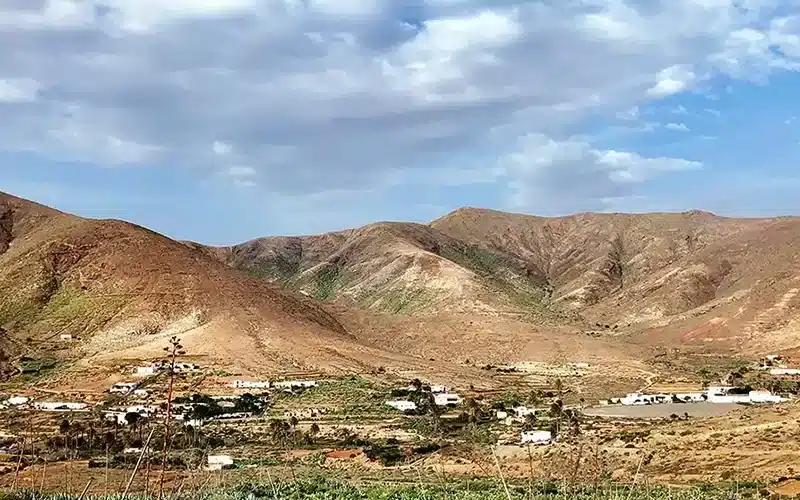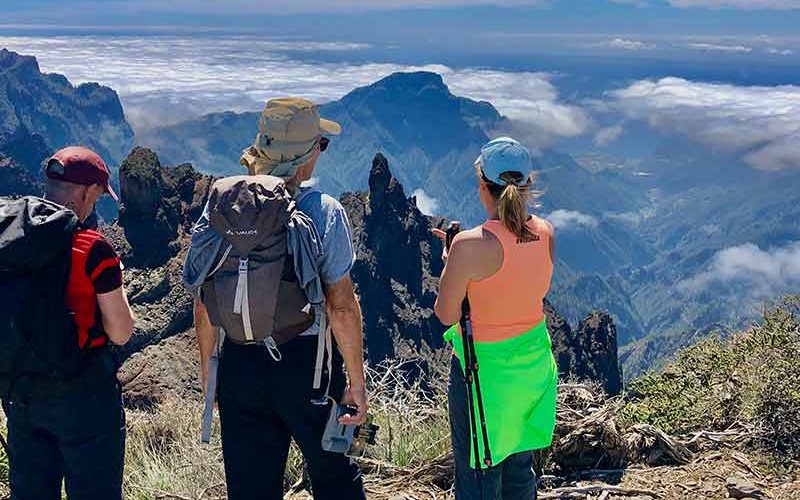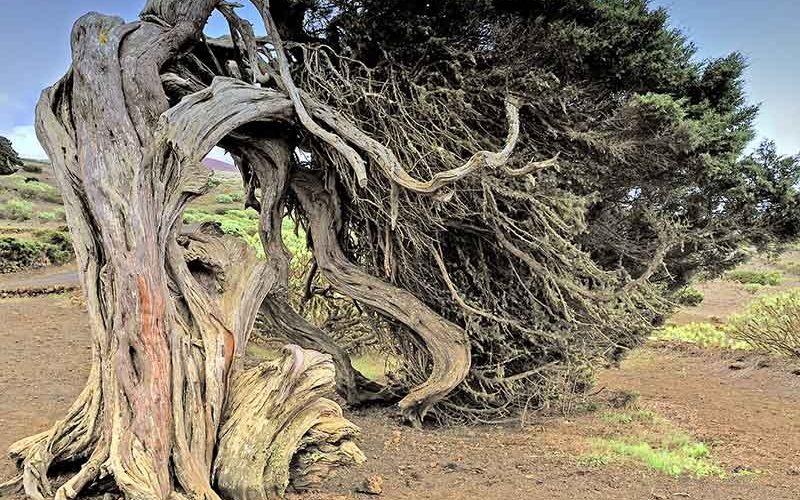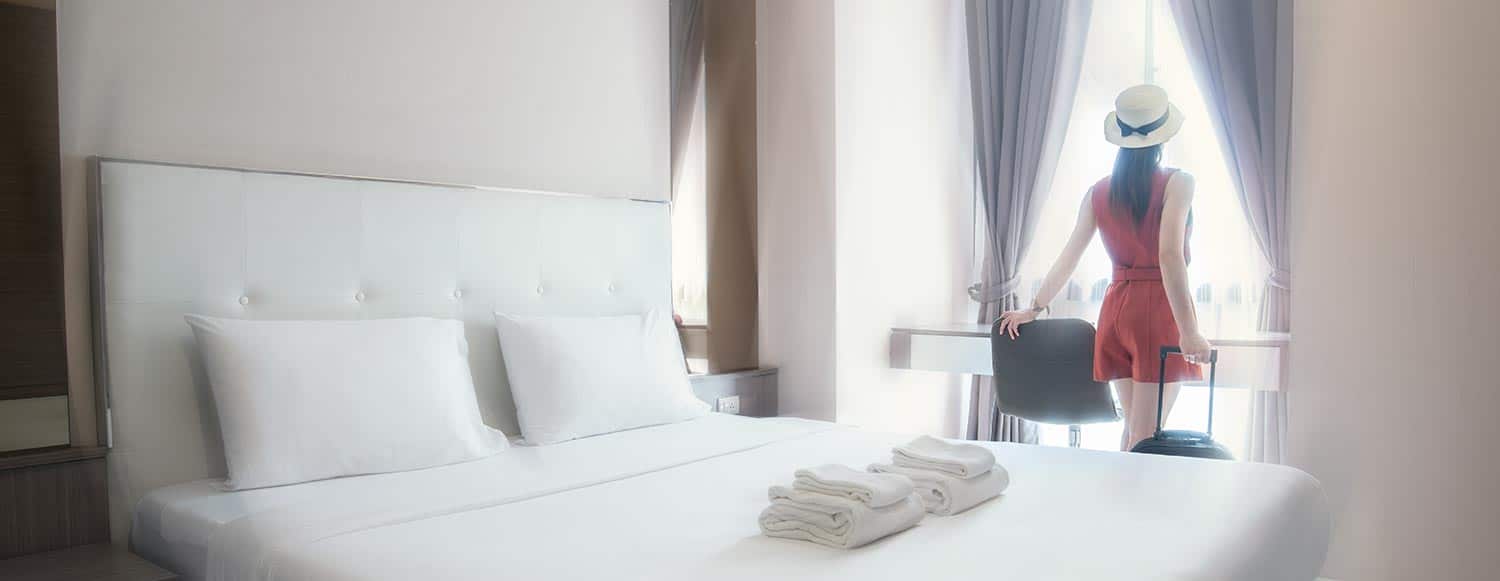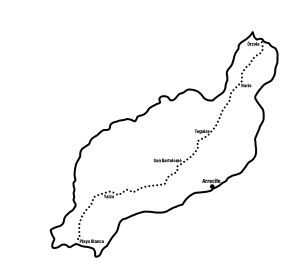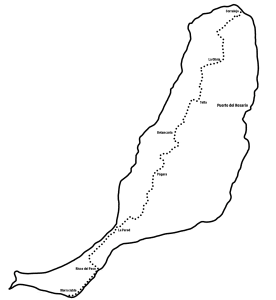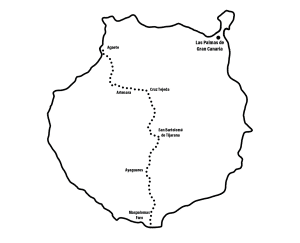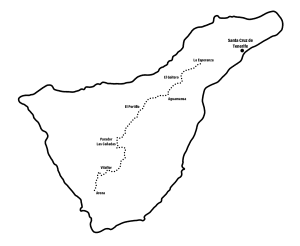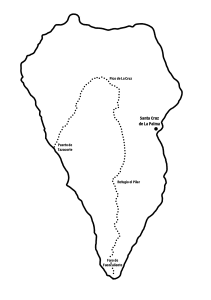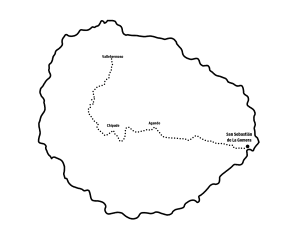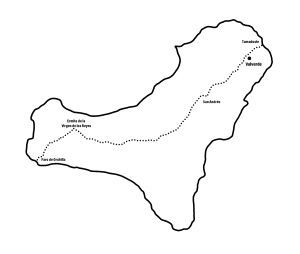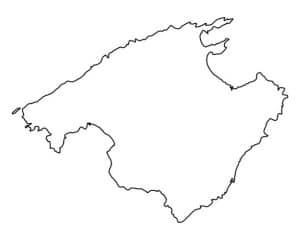Fuerteventura is the second largest island in the Canary archipelago and the longest, with a characteristic elongated shape that Miguel de Unamuno, who spent several seasons in Fuerteventura, identified as “almost a skeleton of an island”. With this, the Bilbao writer did not intend to discredit the island, quite the opposite. Rather, his intentions were to highlight its essential geographic and weather conditions.
Tropical Fuerteventura
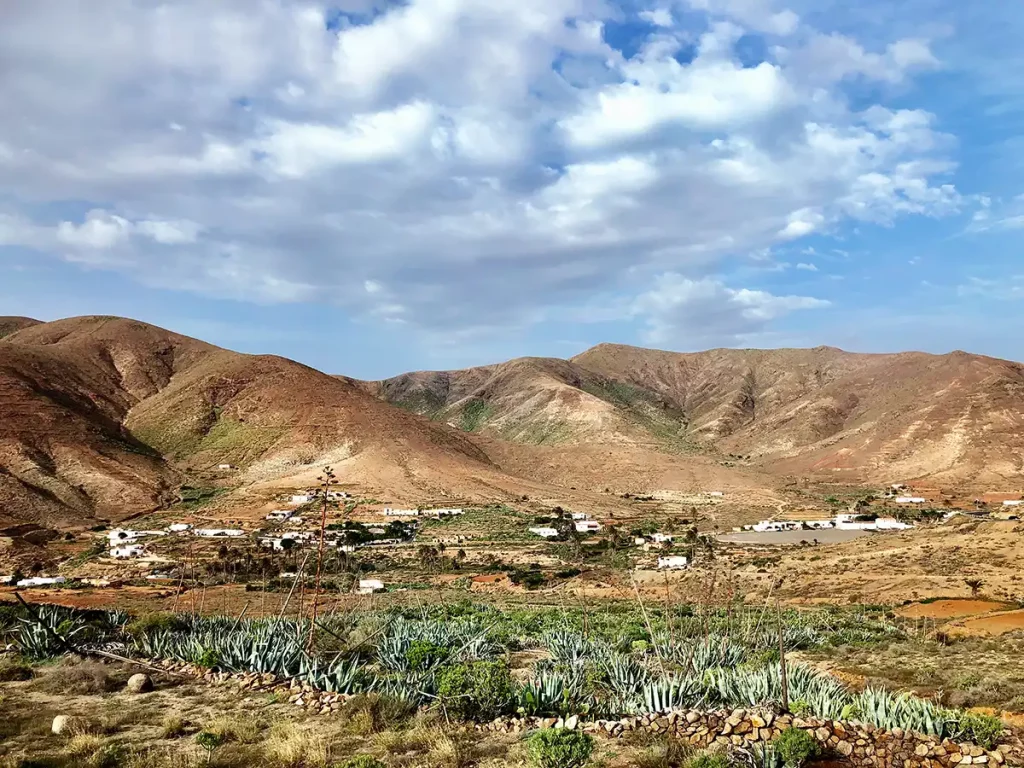

Culture and gastronomy
Despite de fact that the entire Canary Islands share cultural references and gastronomic proposals, each of its islands houses variants and different formular that make them unique.
In Fuerteventura one can taste both wrinkled potatoes with mojo and Canarian stew, some pejines or jareas (small fish dried on the sun and baked or grilled), but also tasty mussels and limpets caught on its own beaches.
Beef and pork are widely consumed, cooked in various ways and grilled. Different to other islands, Fuerteventura is also a producer of baifo and goat meat. Beyond its meat, the island’s goats are also used for their milk. This milk is the main ingredient of the Majorero cheese, cured with oil, paprika or corn flour. It is a highly valued cheese what has won many awards. Along with the palmero cheese, this is one of the only two Canarian cheeses that has a designation of origin.
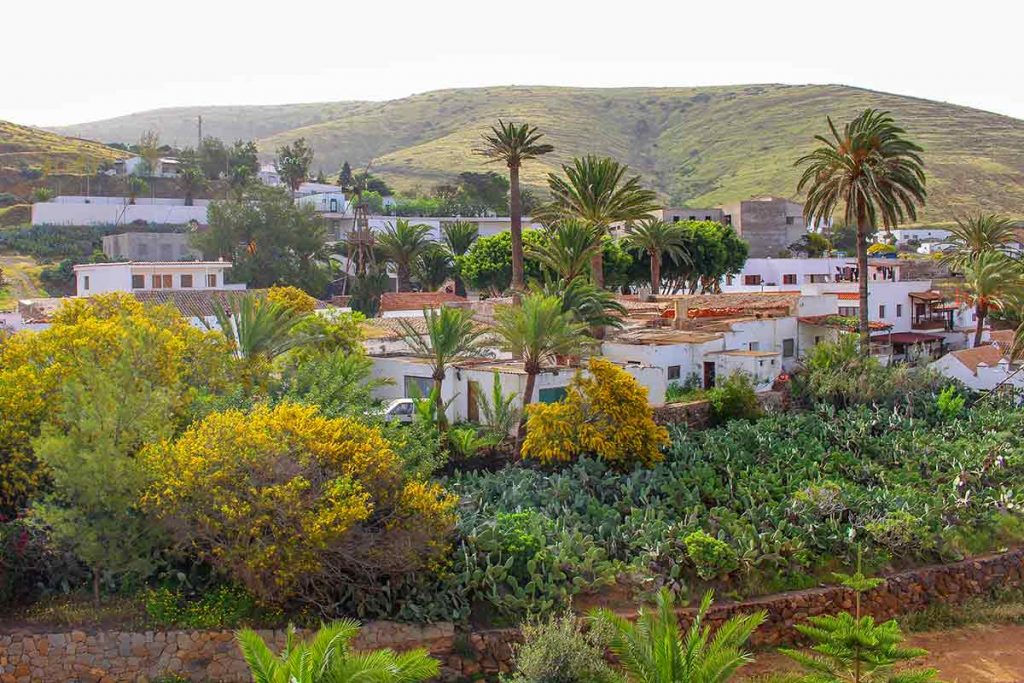
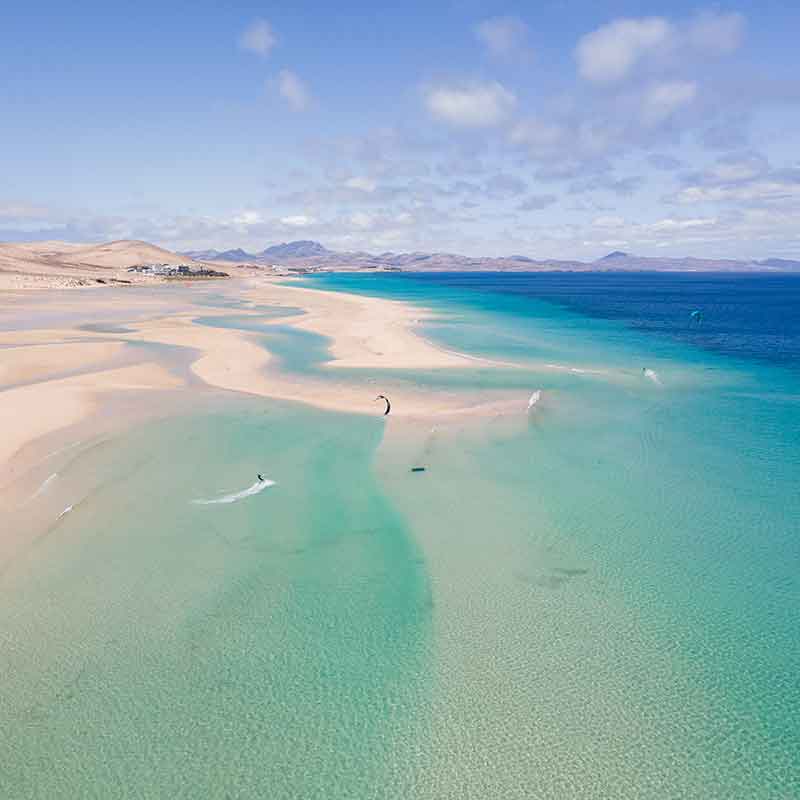
Natural areas of Fuerteventura
Despite what one might imagine at first when the dryness and plains of Fuerteventura come to light, Fuerteventura has enough fascinating places to captivate its visitors. In fact, it is considered the island with the most paradisiacal beaches in the whole archipelago.
As the oldest of its siblings, the cliffs, and caves of Ajuy, to the west of Fuerteventura were the first terrain to emerge from the waters as a result of a series of volcanic eruptions that took place around 100 million years ago.
With all this baggage, the island has a lot to offer. Splendid panoramas to discover.
Dunes of Corralejo
The most charming point in the north of Fuerteventura thanks to the beauty of its fine sandy beaches with dunes that can reach 50 meters in height.
Popcorn beach
Although this is not his real name, it was with the one that went viral on social networks. All because of the rhodoliths, calcareous structures of coralline algae that are washed ashore and that really look like popcorn (somewhat less tasty).
Sacred mountain of Tindaya
Considered a symbol of Fuerteventura, Tindaya has been declared, among other things, of cultural interest due to the large number of aboriginal signs that have been found in it and that indicate that it was an important place of worship for the ancient inhabitants of these lands.
Ajuy
In addition to the geological interest in the area (it has a deposit of oceanic sediments and fossils of extinct marine creatures), its black sand beach stands out and above all. You can even access and explore its ancient caves.
Lobos Island
Just 15 mins by ferry from the port of Corralejo, it used to be the home of an important reserve of sea lions. It seems incredible that just 6km2 of tiny island can provide so many tourist options, not to mention the spectacular nature of the place itself.
Betancuria
One of the best kept secrets of Fuerteventura is located a very short distance from Betancuria, which was the first capital of the Canary Islands. About 6km of coastline formed by natural pools of tranquil emerald waters.
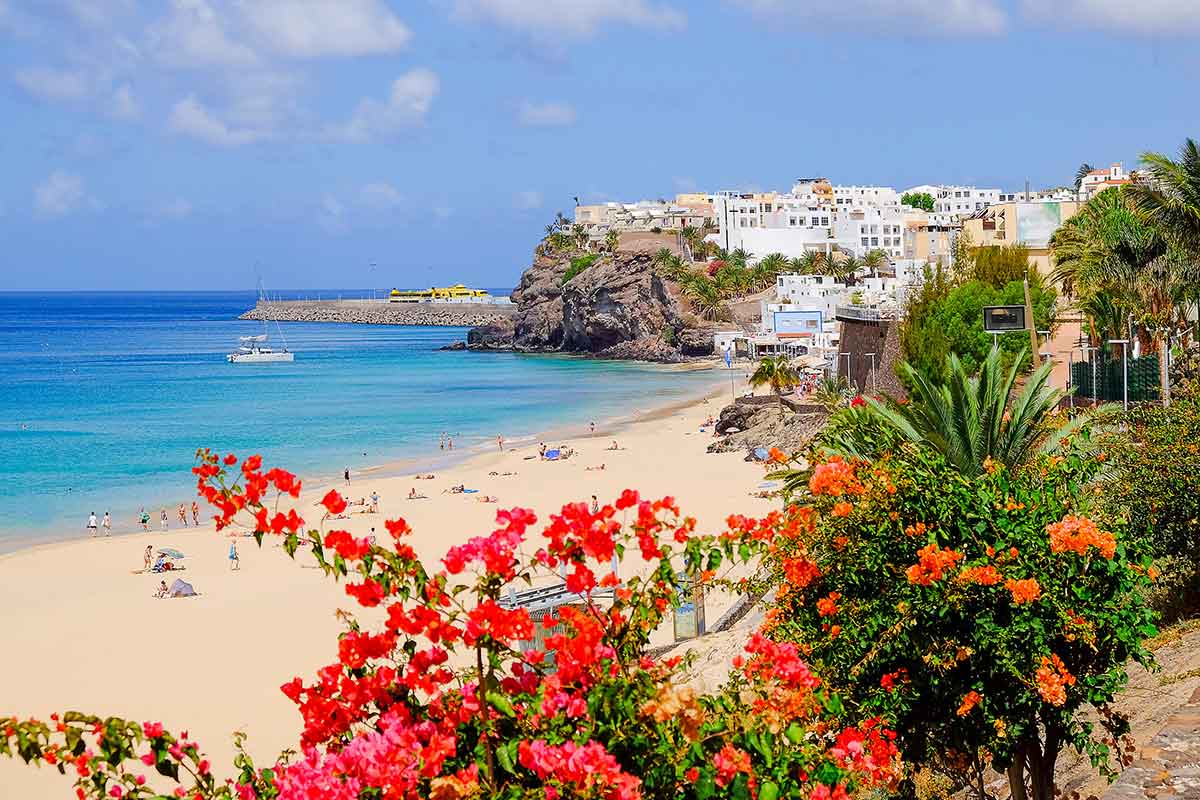
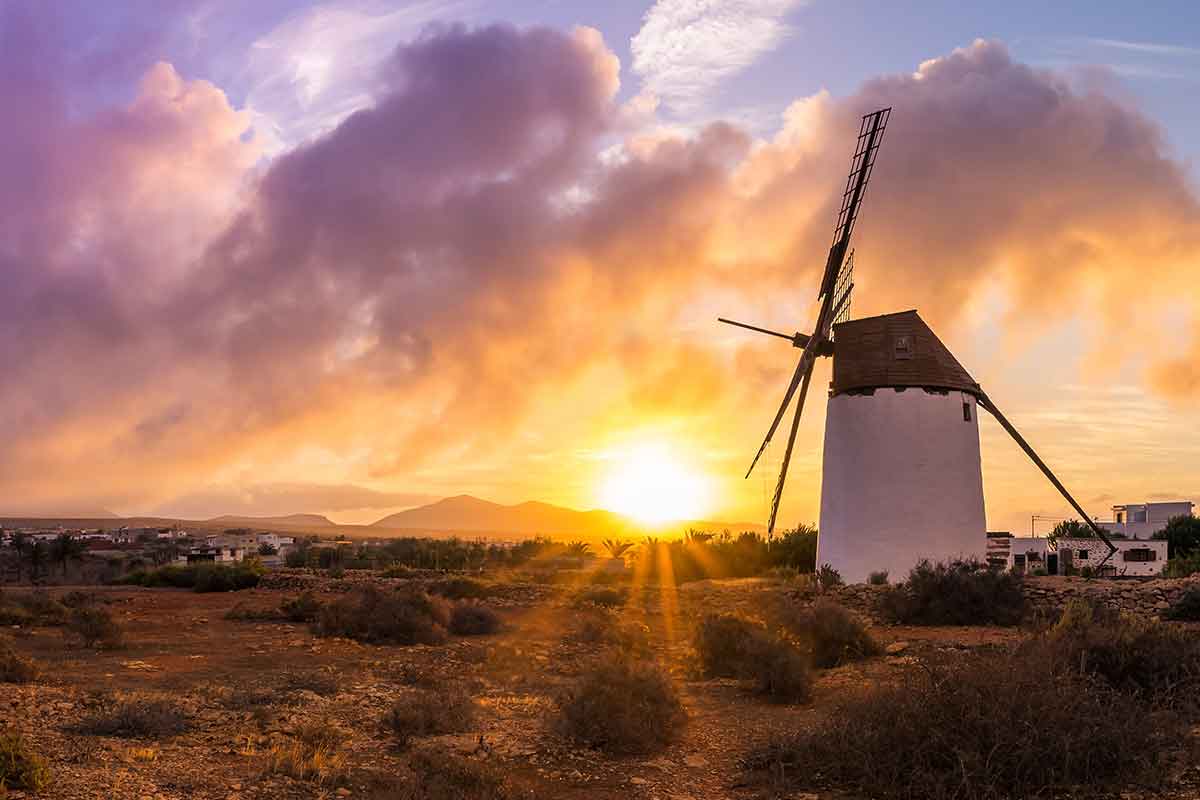
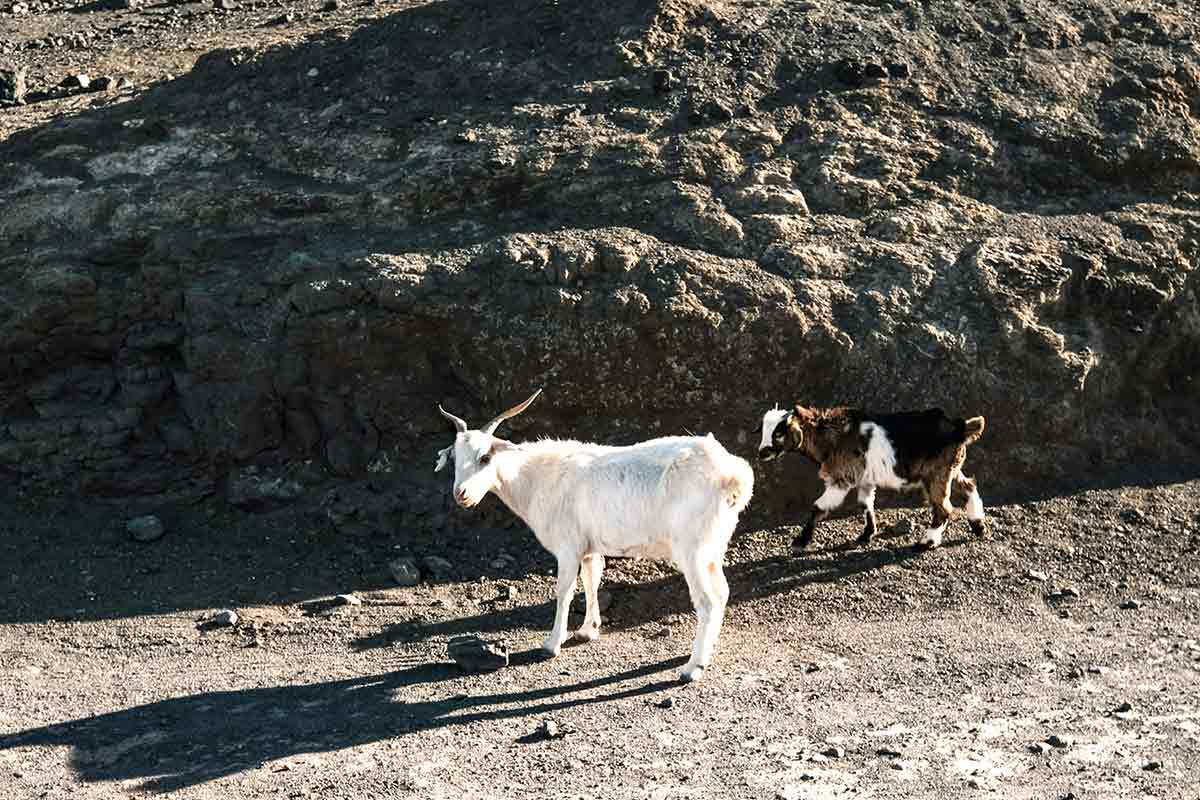
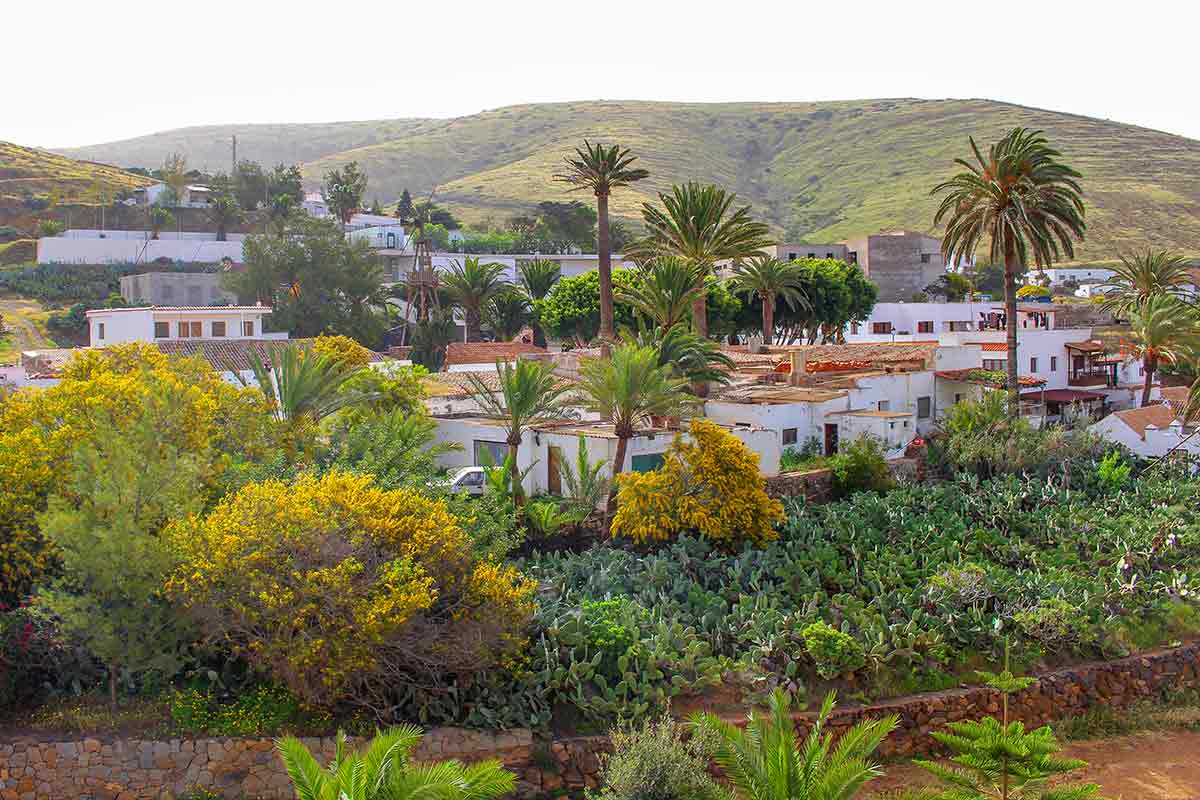
Activities
We would like to arrange a list that includes the recommended activities to do while visiting Fuerteventura.
- Visit the House Museum of Unamuno
- Visit the Museum of the Salinas del Carmen
- Also the one with the Majorero cheese
- Surfing classes for beginners in Corralejo
- Practice yoga on the island of Lobos
- Get to know the Cathedral of Santa María de Betancuria
- Tour the entire island on foot in several days
- Hikes Fuerteventura
You can even hike with goats around you, a new type of hiking that’s becoming trendier. - Photo sessions with the breathtaking panoramas
- Play a game of tennis at any of the sports centers in Fuerteventura
- See dolphins and whales unfolding in their natural habitat
- Go on a catamaran or sailboat ride
- Canoe or Kayak tour
- See sea turtles at the Morro Jable conservation and recovery center
- Bike to the less accessible areas of the island
- And much more!
Hikes Fuerteventura
…do not miss the hiking tours from La Pared, the impressive mountain range in the south.
Our INDEPENDENT HIKING programmes:
Fuerteventura Trail GR 131
from 850 €Fuerteventura ESSENTIAL
from 715 €Our escorted WALKING PROGRAMMES in a group:
La Palma walking holidays
from 985 €Walking holidays in El Hierro
from 945 €Do you run your OWN GROUP ?
…And if you prefer a tailor-made plan for your group that
combine different islands or visit special places
we will adapt it to your prerogatives.
Your own group? Ask us !
If you wish a tailor-made plan
for your group that combine different
islands or visit special places,
we will adapt it to your prerogatives.
Your own group? Ask us !
Our small & CHARMING HOTELS:
see the accommodation related to our hiking programmes.
The Romans referred to it as Planasia. Its peculiar width (little more than 25 kilometers) and geography allows the island to retain the humid air. Its proximity to Africa (not even 100 kilometers away from the African coast) and its proximity to the high pressure are of the Azores, makes it the driest island in the entire archipelago.
The origin of its current name is very likely to come from the term with which the Romans referred to the Canaries, Fortunatae Insulae or Fortunate Islands. Its first inhabitants arrived hundreds of years before the Spanish conquistadores. It is believed that they first reached the islands around 1000 BC, and it is known that they came from the Berber tribes of North Africa.
During the following centuries and baptized as Erbania or Herbania by the Guanche people, it was divided into two territories separated by a wall. On one side, the canton of Jandía and, on the other, that of Maxorata. This continued until the conquest of the Europeans in the 15th century.


